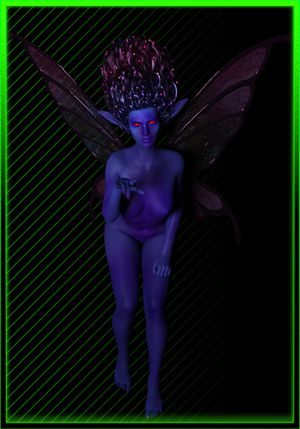Fairy

| Name | Fairy |
| Race | Nature Spirit |
| Type | Physical |
| Faction | Independent |
| Premiere | Desideratum: Blood Bonds |
| Relative(s) | None Applicable |
Myths and stories about fairies do not have a single origin, but are rather a collection of folk beliefs from disparate sources (including Celtic, Slavic, German, English, and French folklore). Various folk theories about the origins of fairies include casting them as either demoted angels or demons in a Christian tradition, as minor deities in Pagan belief systems, as spirits of the dead, as prehistoric precursors to humans, or as elementals. However, in reality a fairy (also fay, fae, fair folk) is a metaphysical, supernatural, or preternatural corporeal spirit. Wild and unpredictable, they are like humans, emotional and impulsive, but to incredible degrees. Unlike most humans, all fairies have innate and powerful magical wielding capabilities. This type of fairy magic is often referred to as glamour.
Fairies are divided into the Seelie Court (more beneficently inclined, but still dangerous), and the Unseelie Court (more malicious). While fairies of the Seelie Court enjoyed playing generally harmless pranks on humans, those of the Unseelie Court often brought harm to humans for entertainment. Their behaviors are generally based in this manner with the Seelie fairies being more aligned with the Inner Light and the Unseelie being much closer to the Outer Darkness in magic and vibration. Absinthe Van Gothen encountered both types while in Forest National Park. While the Seelie fairy blessed Absinthe, the Unseelie fairies had teamed up with the plague witch, Baba Yaga, and tried to kill the monster hunter.